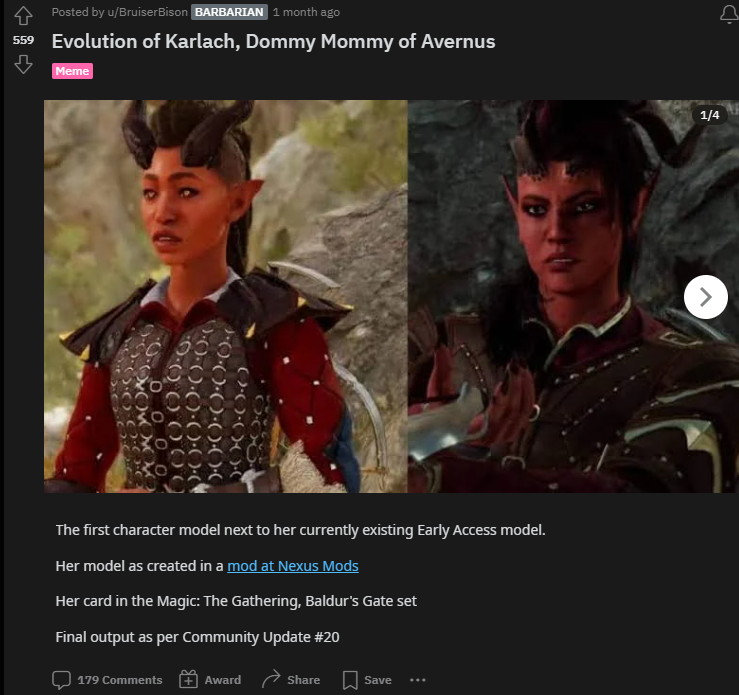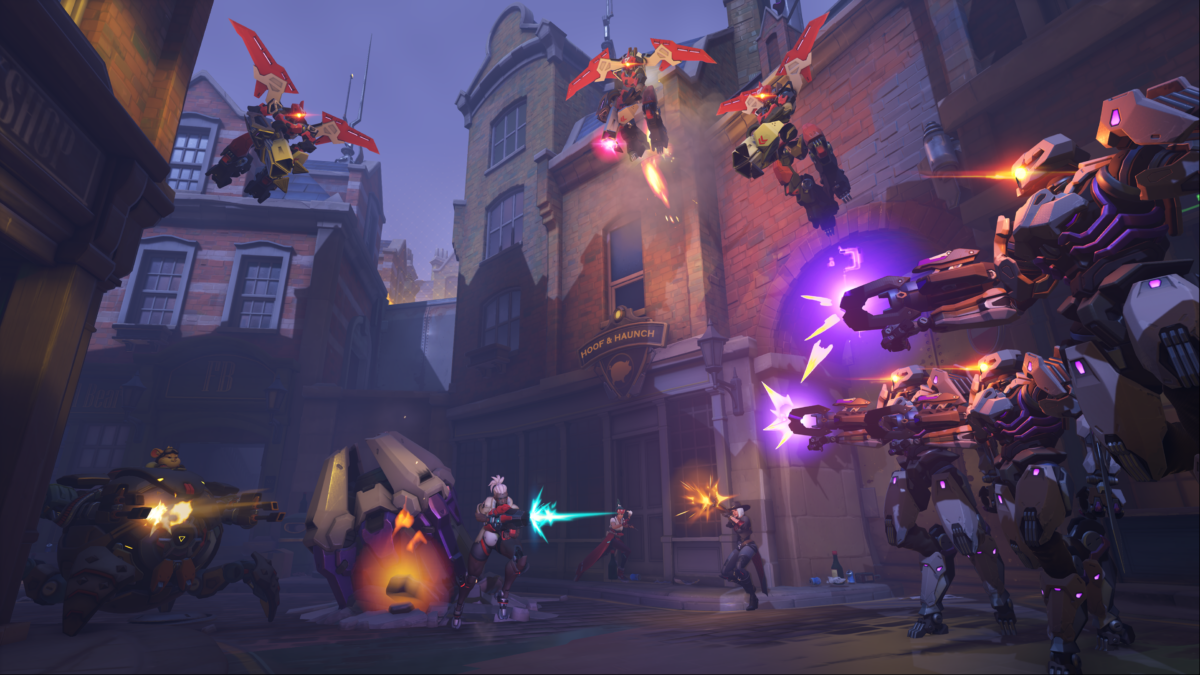Just as likely to break windows and knock down doors as it was to temporarily fracture friendships, 2020’s Moving Out was a raucously entertaining co-op game that took the typically tiresome task of shifting furniture and turned it into a giddy form of slapstick. The hilariously chaotic couch-carrying fundamentals of the original remain relatively unchanged in Moving Out 2, but the formula has been refreshed to a substantial degree via a more outlandish approach to level design and added environmental interactivity that brings a bit more depth to the furniture-flinging strategy. It’s a shame that little has been done to make it more compelling for solo players, so just like the chore it’s based on you’ll have to wrangle at least one buddy into helping you out, but when you do Moving Out 2 delivers tightly packed tension and hilarity by the cardboard boxload once again.
Multiverses may well have been done to death by super hero movies at this point, but Moving Out 2 uses them to good effect here in order to place you into a series of entertainingly absurd scenarios. Things get fantastical right away when a number of interdimensional portals open up around the small town of Packmore, leading your team of heavy lifters to steer their delivery truck through tears in the fabric of space and time in order to pick up and pack an assortment of quirky cargo.
In one moment you’ll be struggling to steer a sofa-sized croissant through a swirling roulette table made of gingerbread, and in the next you’ll be dodging out of the way of sliding obstacles in a tilting cottage being held aloft by a giant landlord. Moving Out 2 is stacked high with personality, and its light story is stuffed with so many guilty-pleasure puns it feels like it was at least partially scripted by throwing darts at a board covered in dad jokes.
Moves Like Stagger
Like a box of fine china that’s been carefully carried to the back of the delivery truck, SMG Studio has taken an ‘if it ain’t broke, don’t fix it’ approach to the central gameplay of Moving Out 2. Much like the original game, ferrying objects to the designated drop-off point in tandem with your co-op partner is a delicate dance that involves careful verbal coordination and constant battle between your combined inertia and the obstacles in your path. The movers themselves – a roster of bizarro bobbleheads that has been greatly expanded in numbers since the original – feel just as deliberately clumsy as ever, and their move set is every bit as simple. This familiarity admittedly meant that, for the opening set of levels at least, Moving Out 2 initially felt closer to a standalone expansion pack than a fully-fledged sequel.
However, before too long a number of welcome environmental enhancements bring more noticeable points of difference to proceedings. There are some satisfyingly silly new ways to complete each moving job, like playing a game of beer pong with a toaster by bouncing it off the taut fabric of an open umbrella and watching it soar into the flatbed of the truck, or piloting a wrecking ball drone to crash through a series of pillars in order to clear a path for your fellow movers. In one level the deliverable items were strung up high above the stage, and my co-op partners and I had to position a large fan to blow us up into the air to try and drag everything down using our combined weight. There’s still a fair amount of time spent manoeuvring stubborn, L-shaped couches through narrow hallways and tearing microwaves straight out of the walls, but there are enough distinct little diversions in each scenario to make Moving Out 2 consistently feel like more than a mere retread.
Moving Out 2 is stuffed with so many guilty-pleasure puns it feels like it was at least partially scripted by throwing darts at a board covered in dad jokes.Other environmental elements are introduced in order to place a greater emphasis on carefully planning your routes through each level, like doors that only open one way through mazes of interconnected rooms and even colour-coded portal gates that blink you from one side of the map to the other, both of which can quickly lead to confusion if you don’t keep your wits about you. Elsewhere, giant batteries aren’t just tricky to transport around but they also only last for a short period of time when placed into power circuits, putting you under greater pressure to push and pull furniture through open doors before the batteries deplete and the doors slam shut. There’s generally a fair bit more to coordinate this time around, and by coordinate I essentially mean yell incoherent directions at your friends or loved ones and then try not to lose your cool when they inevitably misinterpret you. If your group’s anything like mine, the collective mood will swing from frustration to elation at regular intervals.
That’s not to say every stage demands such a shouty amount of collaboration, and Moving Out 2 weaves in plenty of straightforward score attack stages over the course of the journey that more closely resemble Mario Party-style mini-games in their relative simplicity. Lobbing gumballs through moving basketball hoops or dragging luggage through a Fall Guys-style gauntlet run makes for some more focussed slices of fun amidst the more elaborate tasks. This healthy balance between more involved objectives and instantly gratifying goals helps Moving Out 2 maintain an enjoyable rhythm as you crash the delivery truck in and out of the three main parallel worlds – the sugarcoated Snackmore, the wizarding world of Middle Folkmore, and the futuristic floating city of Pactropolis – before arriving in a fourth and final realm where fragments of each of the disparate realities are merged into a series of wacky endgame mash-ups.
Cloudy with a Chance of Pratfalls
Some of Moving Out 2’s scenarios were more popular than others, though, at least among the players on the couch beside me. The regenerating clouds in some of the sky-high apartments that must be continually sucked away with a handheld vacuum proved to be exhausting in every sense of the word, while any job that involves the corralling of chickens into farmyard pens is generally pretty clucking annoying. Also, if I smash my nose with one more stepped-on garden rake I’m likely to become as certifiable as Sideshow Bob. But thankfully, Moving Out 2 mixes things up so often that no single element – popular or otherwise – ever really outstays its welcome, whether they be ziplines, pulley systems, or even drivable trains.
In one particularly ludicrous level where you have to forcefully furnish a lounge room by firing television sets and sofas through the windows with an oversized slingshot.At times it even flips the work order entirely, giving you the job of moving in by emptying the delivery truck and furnishing a house by positioning each object in a predetermined place; the fun, of course, comes from gleefully bashing and crashing every package towards the front door like you’re Ace Ventura posing as a UPS delivery man. While moving in was eventually patched into the original as a way to effectively play the main levels in reverse, here it’s implemented in a far more deliberate manner, like in one particularly ludicrous level where you have to forcefully furnish a lounge room by firing television sets and sofas through the windows with an oversized slingshot.
Still, at other times you fumble the goods even when you don’t mean to. Playing on the Nintendo Switch, there was a shared sense among my co-op partners and I that characters seemed a little more prone to randomly dropping items than they were in the original, and such is the deliberate wonkiness of the general movement and physics I’m not completely sure if this is an intentional handicap to add extra unpredictability to the mayhem or merely a bug with the controls. Either way, it never became a major issue, but certainly it seems that while you can customise your character’s head to be anything from a cassette tape to a corn cob, no matter what you do they all share the exact same set of butterfingers.
Speaking of those characters, I appreciated the way Moving Out 2 litters its levels with hidden character crates, alternative costumes, and bonus arcade game cartridges to find. Sniffing out these unlockables encouraged repeat playthroughs of the majority of Moving Out 2’s 50-odd main levels and provided additional reward to poking and prodding every corner and curious mechanical device I came across. That said, it’s a shame that the returning cryptic clue-based side objectives don’t give a little onscreen pop-up as you complete them like they did in the original, because it did lead to a fair bit of trial and error as I repeatedly wandered around a specific stage trying to work out exactly which optional task an obtuse hint like ‘Best Friends Forever’ could possibly be referring to.
On that note, it also seems a little punitive that Moving Out 2 demands you successfully meet the main delivery quota in any given stage in order to register the completion of any side objectives. In the previous game, you would still get credit for these optional tasks even if you were timed out before loading the truck, which made it easier to go back and hoover up anything you missed the first time through. There are also some missing presentational flourishes, like the way the loaded truck doesn’t shutter its doors and peel out at the end of a level like it did in the original. Instead, it just sits there while you’re booted back out to the main map. In coming up with the many grand designs for Moving Out 2, it seems like some of these minor details may have been overlooked, and I can’t help but notice their absence.
Lastly, while moving house on your own in Moving Out 2 is substantially easier on your back than moving house on your own in real life, it’s only marginally more fun, and as was the case with the original it remains the least enjoyable way to play. There’s significantly less challenge shifting a series of objects when you don’t have to coordinate with a partner, and equally there’s not the same sense of unpredictability to conjure up anywhere near as many laughs. Thankfully, Moving Out 2 features online multiplayer for the first time in the series, and while I wasn’t able to test it as part of this review process, it’s nice to know that players who might not be able to enjoy local multiplayer games can still enjoy clearing houses with friends without having to leave the comfort of their own.




